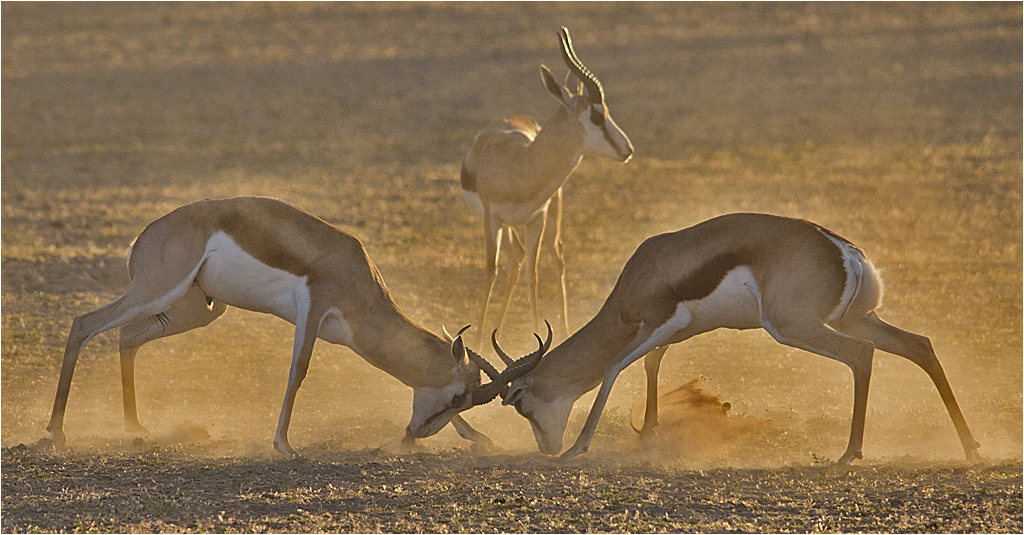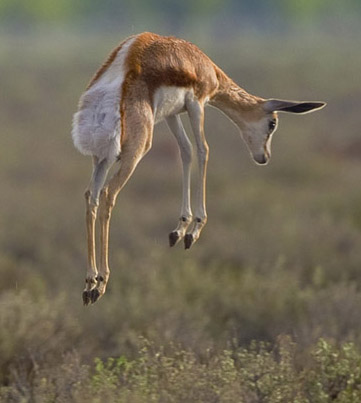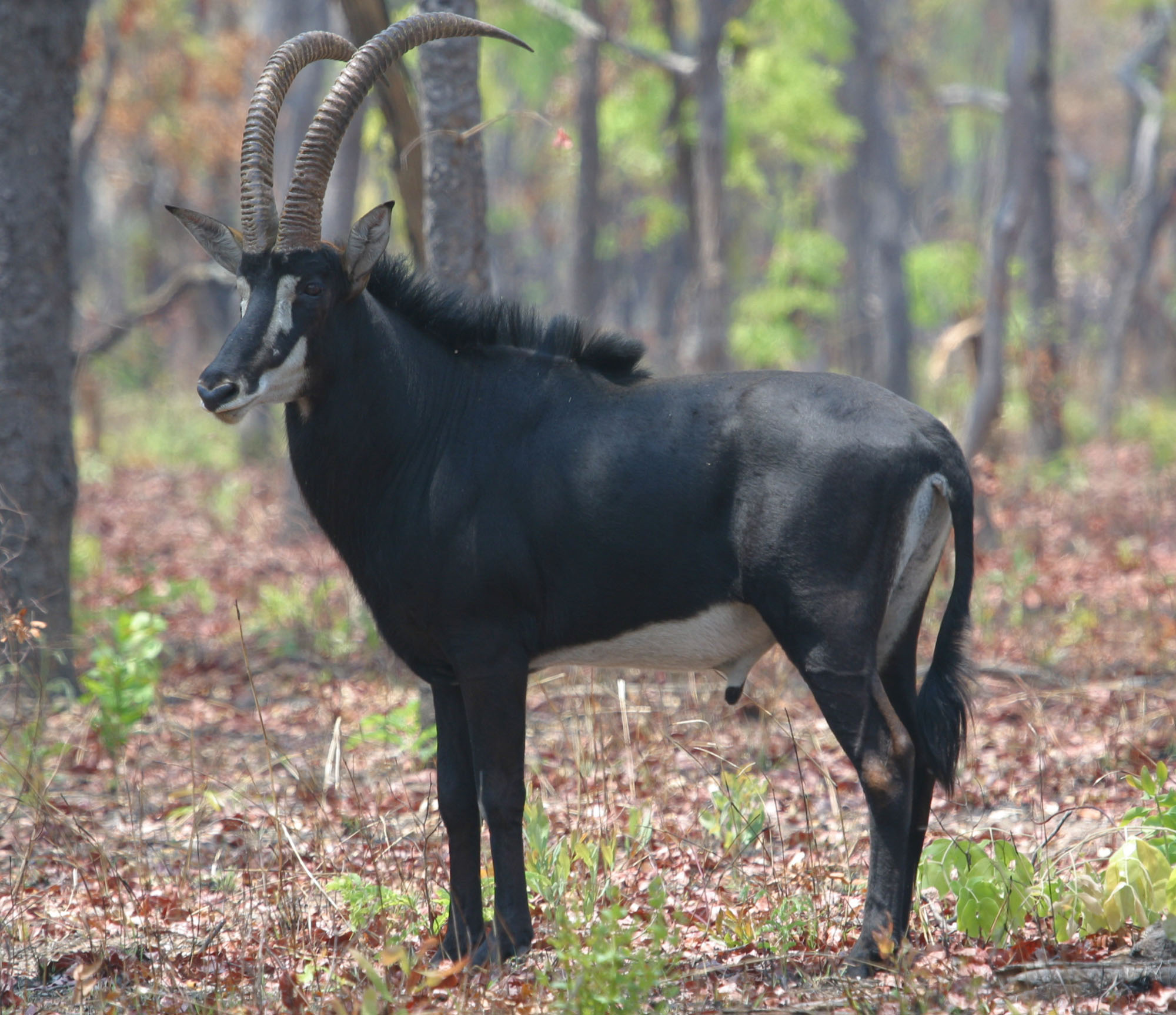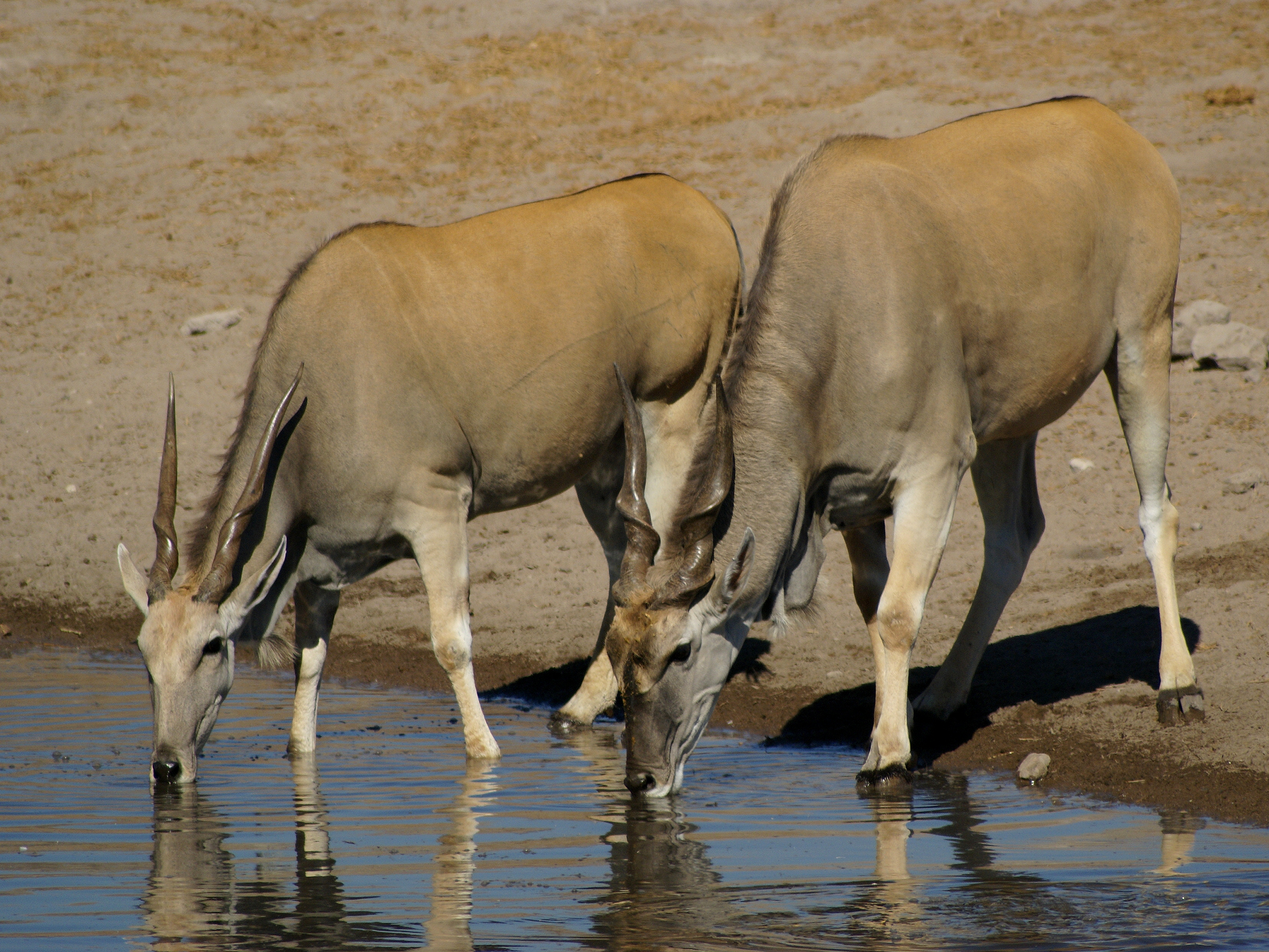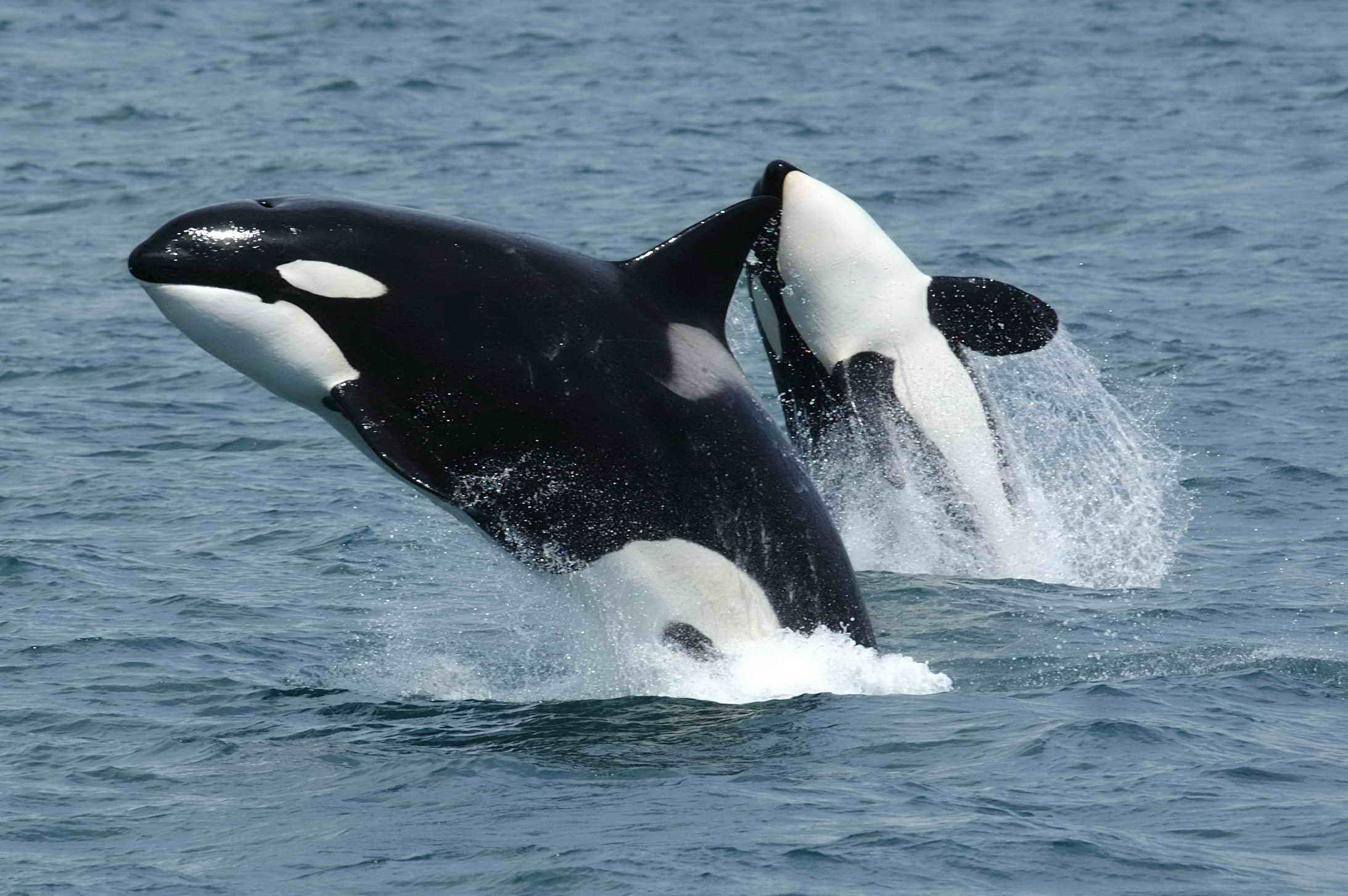|
Springbok
The springbok or springbuck (''Antidorcas marsupialis'') is an antelope found mainly in south and southwest Africa. The sole member of the genus (biology), genus ''Antidorcas'', this bovid was first Species description, described by the German zoologist Eberhard August Wilhelm von Zimmermann in 1780. Three subspecies are identified. A slender, long-legged antelope, the springbok reaches at the shoulder and weighs between . Both sexes have a pair of black, long horn (anatomy), horns that curve backwards. The springbok is characterised by a white face, a dark stripe running from the eyes to the mouth, a light brown coat (animal), coat marked by a reddish-brown stripe that runs from the upper foreleg to the buttocks across the flanks like the Thomson's gazelle, and a white Rump (animal), rump flap. Active mainly at dawn and dusk, springbok form harem (zoology), harems (mixed-sex herds). In earlier times, springbok of the Kalahari Desert and Karoo migrated in large numbers acros ... [...More Info...] [...Related Items...] OR: [Wikipedia] [Google] [Baidu] |
Thomson's Gazelle
Thomson's gazelle (''Eudorcas thomsonii'') is one of the best known species of gazelles. It is named after explorer Joseph Thomson (explorer), Joseph Thomson and is sometimes referred to as a "tommie". It is considered by some to be a subspecies of the red-fronted gazelle and was formerly considered a member of the genus ''Gazella'' within the subgenus ''Eudorcas'', before ''Eudorcas'' was elevated to genus status. Thomson's gazelles can be found in numbers exceeding 200,000 in Africa and are recognized as the most common type of gazelle in East Africa. A small fast antelope, the Thomson's gazelle is said to have top speeds up to . It is the fourth-fastest land animal, after the cheetah (its main predator), pronghorn, and springbok. Taxonomy and etymology The current scientific name of Thomson's gazelle is ''Eudorcas thomsonii''. It is a member of the Genus (biology), genus ''Eudorcas'' and is classified under the Family (biology), family Bovidae. Thomson's gazelle was first Scien ... [...More Info...] [...Related Items...] OR: [Wikipedia] [Google] [Baidu] |
South Africa
South Africa, officially the Republic of South Africa (RSA), is the Southern Africa, southernmost country in Africa. Its Provinces of South Africa, nine provinces are bounded to the south by of coastline that stretches along the Atlantic Ocean, South Atlantic and Indian Ocean; to the north by the neighbouring countries of Namibia, Botswana, and Zimbabwe; to the east and northeast by Mozambique and Eswatini; and it encloses Lesotho. Covering an area of , the country has Demographics of South Africa, a population of over 64 million people. Pretoria is the administrative capital, while Cape Town, as the seat of Parliament of South Africa, Parliament, is the legislative capital, and Bloemfontein is regarded as the judicial capital. The largest, most populous city is Johannesburg, followed by Cape Town and Durban. Cradle of Humankind, Archaeological findings suggest that various hominid species existed in South Africa about 2.5 million years ago, and modern humans inhabited the ... [...More Info...] [...Related Items...] OR: [Wikipedia] [Google] [Baidu] |
Etosha National Park
Etosha National Park is a national park in northwestern Namibia and one of the largest national parks in Africa. It was proclaimed a game reserve in March 1907 in Ordinance 88 by the Governor of German South West Africa, Friedrich von Lindequist. It was designated as ''Wildschutzgebiet'' in 1958, and was awarded the status of national park in 1967, by an act of parliament of the Republic of South Africa. It spans an area of and was named after the large Etosha pan which is almost entirely within the park. With an area of , the Etosha pan covers 23% of the total area of the national park. The area is home to hundreds of species of mammals, birds and reptiles, including several Threatened species, threatened and Endangered species, endangered species such as the black rhinoceros. Sixty-one black rhinoceros were killed during poaching in Namibia during 2022, 46 of which were killed in Etosha. The park is located in the Kunene Region, Kunene region and shares boundaries with the regi ... [...More Info...] [...Related Items...] OR: [Wikipedia] [Google] [Baidu] |
Pronking
Stotting (also called pronking or pronging) is a behavior of quadrupeds, particularly gazelles, in which they spring into the air, lifting all four feet off the ground simultaneously. Usually, the legs are held in a relatively stiff position. Many explanations of stotting have been proposed, though for several of them there is little evidence either for or against. The question of why prey animals stot has been investigated by evolutionary biologists including John Maynard Smith, C. D. Fitzgibbon, and Tim Caro; all of them conclude that the most likely explanation given the available evidence is that it is an honest signal to predators that the stotting animal would be difficult to catch. Such a signal is called "honest" as it is not deceptive in any way, and would benefit both predator and prey: the predator as it avoids a costly and unproductive chase, and the prey as it does not get chased. Etymology ''Stot'' is a common Scots and Northern English verb meaning "bounce" ... [...More Info...] [...Related Items...] OR: [Wikipedia] [Google] [Baidu] |
Bovid
The Bovidae comprise the family (biology), biological family of cloven-hoofed, ruminant mammals that includes Bos, cattle, bison, Bubalina, buffalo, antelopes (including Caprinae, goat-antelopes), Ovis, sheep and Capra (genus), goats. A member of this family is called a bovid. With 143 Extant taxon, extant species and 300 known Extinction, extinct species, the family Bovidae consists of 11 (or two) major subfamilies and thirteen major tribes. The family evolved 20 million years ago, in the early Miocene. The bovids show great variation in size and Fur, pelage colouration. Except some Polled livestock, domesticated forms, all male bovids have two or more horn (anatomy), horns, and in many species, females possess horns, too. The size and shape of the horns vary greatly, but the basic structure is always one or more pairs of simple bony protrusions without branches, often having a spiral, twisted or fluted form, each covered in a permanent sheath of keratin. Most bovids bear 30 to ... [...More Info...] [...Related Items...] OR: [Wikipedia] [Google] [Baidu] |
Antelope
The term antelope refers to numerous extant or recently extinct species of the ruminant artiodactyl family Bovidae that are indigenous to most of Africa, India, the Middle East, Central Asia, and a small area of Eastern Europe. Antelopes do not form a monophyletic group, as some antelopes are more closely related to other bovid groups, such as bovines, goats, and sheep, than to other antelopes. A stricter grouping, known as the true antelopes, includes only the genera '' Gazella'', '' Nanger'', '' Eudorcas'', and '' Antilope''. One North American mammal, the pronghorn or "pronghorn antelope", is colloquially referred to as the "American antelope", despite the fact that it belongs to a completely different family ( Antilocapridae) than the true Old-World antelopes; pronghorn are the sole extant member of an extinct prehistoric lineage that once included many unique species. Although antelope are sometimes referred to, and easily misidentified as, "deer" ( cervids), true ... [...More Info...] [...Related Items...] OR: [Wikipedia] [Google] [Baidu] |
Afrikaans Language
Afrikaans is a West Germanic language spoken in South Africa, Namibia and to a lesser extent Botswana, Zambia, Zimbabwe and also Argentina where there is a group in Sarmiento that speaks the Patagonian dialect. It evolved from the Dutch vernacular of South Holland ( Hollandic dialect) spoken by the predominantly Dutch settlers and enslaved population of the Dutch Cape Colony, where it gradually began to develop distinguishing characteristics in the 17th and 18th centuries. Although Afrikaans has adopted words from other languages including German, Malay and Khoisan languages, an estimated 90 to 95% of the vocabulary of Afrikaans is of Dutch origin. Differences between Afrikaans and Dutch often lie in the more analytic morphology and grammar of Afrikaans, and different spellings. There is a large degree of mutual intelligibility between the two languages, especially in written form. Etymology The name of the language comes directly from the Dutch word (n ... [...More Info...] [...Related Items...] OR: [Wikipedia] [Google] [Baidu] |
Goat
The goat or domestic goat (''Capra hircus'') is a species of Caprinae, goat-antelope that is mostly kept as livestock. It was domesticated from the wild goat (''C. aegagrus'') of Southwest Asia and Eastern Europe. The goat is a member of the family Bovidae, meaning it is closely related to the sheep. It was one of the first animals to be domesticated, in Iran around 10,000 years ago. Goats have been used for milk, Goat meat, meat, Animal fur, wool, and Animal skin, skins across much of the world. Milk from goats is often turned into goat cheese, cheese. In 2022, there were more than 1.1 billion goats living in the world, of which 150 million were in India. Goats feature in mythology, folklore, and religion in many parts of the world, including in the classical myth of Amalthea (mythology), Amalthea, in Tanngrisnir and Tanngnjóstr, the goats that pulled the chariot of the Norse god Thor, in the Scandinavian Yule goat, and in Hinduism's goat-headed Daksha. In Christianity and ... [...More Info...] [...Related Items...] OR: [Wikipedia] [Google] [Baidu] |
Kalahari Desert
The Kalahari Desert is a large semiarid climate, semiarid sandy savanna in Southern Africa covering including much of Botswana as well as parts of Namibia and South Africa. It is not to be confused with the Angolan, Namibian, and South African Namib coastal desert, whose name is of Khoekhoe language, Khoekhoegowab origin and means "vast place". Etymology ''Kalahari'' is derived from the Tswana language, Tswana word ''Kgala'', meaning "the great thirst", or ''Kgalagadi'', meaning "a waterless place"; the Kalahari has vast areas covered by red sand without any permanent surface water. History The Kalahari Desert was not always a dry desert. The fossil flora and fauna from Gcwihaba, Gcwihaba Cave in Botswana indicates that the region was much wetter and cooler at least from 30 to 11 thousand Before Present, especially after 17,500 BP. Geography Drainage of the desert is by dry black valleys, seasonally inundated pans, and the large salt pan (geology), salt pans of the Mak ... [...More Info...] [...Related Items...] OR: [Wikipedia] [Google] [Baidu] |
Least Concern
A least-concern species is a species that has been evaluated and categorized by the International Union for Conservation of Nature (IUCN) as not being a focus of wildlife conservation because the specific species is still plentiful in the wild. They do not qualify as threatened, near threatened, or (before 2001) conservation dependent. Species cannot be assigned the "Least Concern" category unless they have had their population status evaluated. That is, adequate information is needed to make a direct, or indirect, assessment of its risk of extinction based on its distribution or population status. Evaluation Since 2001 the category has had the abbreviation "LC", following the IUCN 2001 Categories & Criteria (version 3.1). Before 2001 "least concern" was a subcategory of the " Lower Risk" category and assigned the code "LR/lc" or lc. Around 20% of least concern taxa (3261 of 15,636) in the IUCN database still use the code "LR/lc", which indicates they have not been re- ... [...More Info...] [...Related Items...] OR: [Wikipedia] [Google] [Baidu] |
Binomial Nomenclature
In taxonomy, binomial nomenclature ("two-term naming system"), also called binary nomenclature, is a formal system of naming species of living things by giving each a name composed of two parts, both of which use Latin grammatical forms, although they can be based on words from other languages. Such a name is called a binomial name (often shortened to just "binomial"), a binomen, name, or a scientific name; more informally, it is also called a Latin name. In the International Code of Zoological Nomenclature (ICZN), the system is also called nomenclature, with an "n" before the "al" in "binominal", which is a typographic error, meaning "two-name naming system". The first part of the name – the '' generic name'' – identifies the genus to which the species belongs, whereas the second part – the specific name or specific epithet – distinguishes the species within the genus. For example, modern humans belong to the genus ''Homo'' and within this genus to the species ''Hom ... [...More Info...] [...Related Items...] OR: [Wikipedia] [Google] [Baidu] |
IUCN
The International Union for Conservation of Nature (IUCN) is an international organization working in the field of nature conservation and sustainable use of natural resources. Founded in 1948, IUCN has become the global authority on the status of the natural world and the measures needed to safeguard it. It is involved in data gathering and Data analysis, analysis, research, field projects, advocacy, and education. IUCN's mission is to "influence, encourage and assist societies throughout the world to conserve nature and to ensure that any use of natural resources is equitable and ecologically sustainable". Over the past decades, IUCN has widened its focus beyond conservation ecology and now incorporates issues related to sustainable development in its projects. IUCN does not itself aim to mobilize the public in support of nature conservation. It tries to influence the actions of governments, business and other stakeholders by providing information and advice and through buildin ... [...More Info...] [...Related Items...] OR: [Wikipedia] [Google] [Baidu] |
